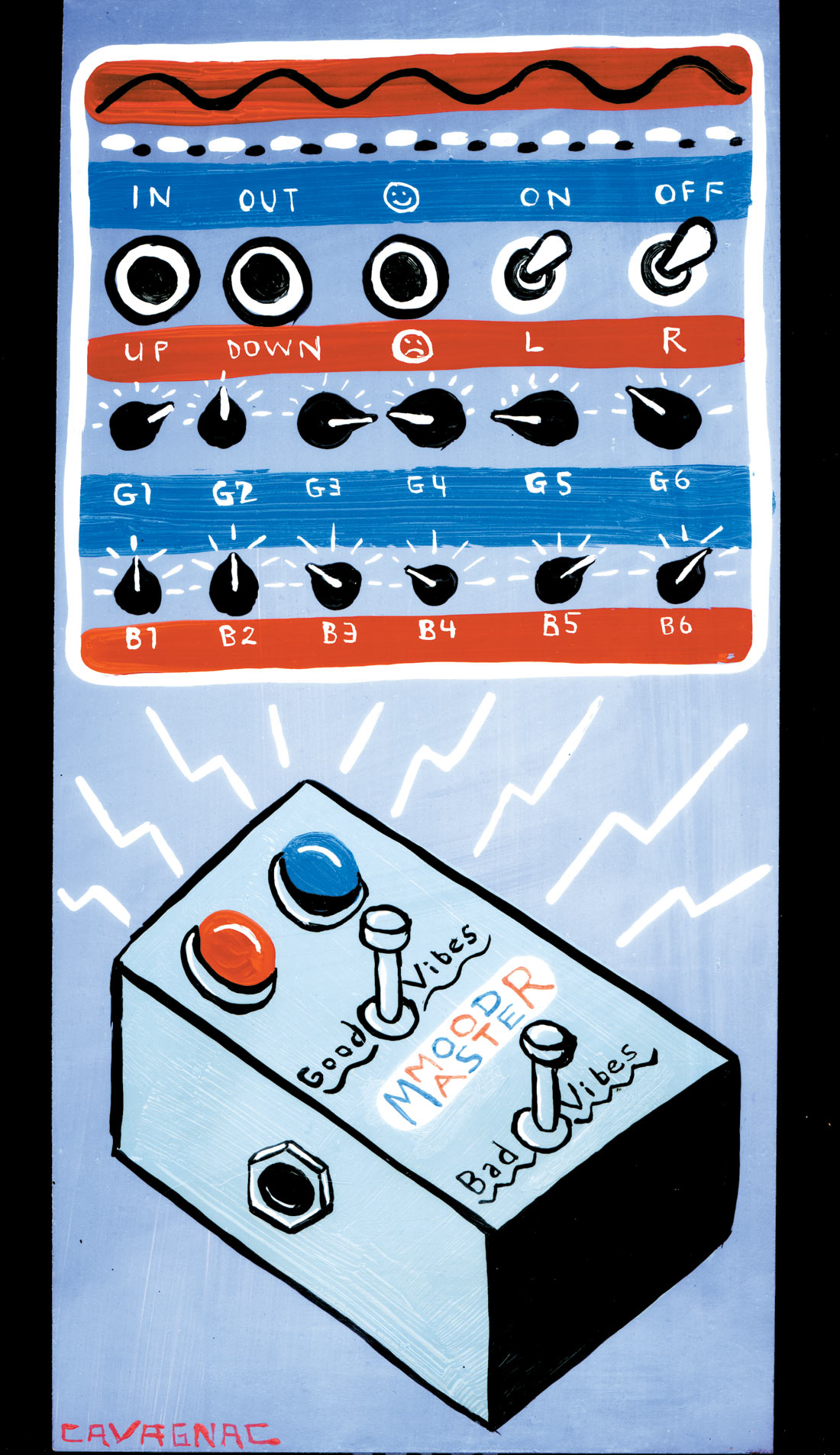The fledgling No Toasters company, headed by Boston-based tech-whiz Bo Dixon (who says he's willing to repair anything except toasters), has combined clever Class A, J-FET circuitry with a quirky overdrive option to come up with a refreshingly singular boutique device: the absurdly good-sounding and flexible Nice Pair two-channel mic preamp.
The Nice Pair's handsome, understated black front panel contains two side-by-side banks of (from left to right): an input gain control, switches for impedence selection, phantom power, input pad, and polarity, followed by a continuously variable output pot. Above each set of controls is a ten-segment LED output meter. Seems the Nice Pair has all the classic mic preamp bases covered, and then some. There's a semi-secret trick in the same spirit as the old "pushing in all the ratio buttons" on an 1176 that more-than-nudges the unit over the edge. The input gain knob is clickable, and when you get to the very last click... look out Mama! That final click switches things into not-so-subtle distortion-land. Very Beatle-y distortion (think Lennon's guitar on "Revolution" or the horns on "Savoy Truffle"). Dixon purposely incorporated this feature into the unit's design to offer the user a unique "extra" option. I've had a blast pumping drums, synths, and vocals through the Nice Pair with this effect. Oh yeah, don't forget guitar... I recently used it to lovingly obliterate a few guitar tracks on the Weisstronauts' and Mittens' newest albums.
Whether I choose to use the "final click" trick or not, the Nice Pair has become my go-to mic preamp at Verdant Studio. It excels at all tasks I ask of it-guitars, vocals, drums, bass. It sounds big and present and seems to "match up" with any microphone I plug into it. I'd surely love to have a dozen or so channels of this preamp at my disposal for tracking. Designed around a Jensen input transformer, the circuit has a ridiculous amount of gain. I find I often need the pad engaged when mic'ing loud sources such as drums. This is not a problem by any means; I have not noticed any major fidelity shift with the pad in. I've found this super-high gain and selectable impedance makes the unit a perfect match for ribbon mics.
I recently A/B'ed it against other solid-state preamps, including Neve 33114, Universal Audio 2108, and API 3124. Using a variety of mics on a variety of sources, I felt the Nice Pair often sounded most similar to the UA 2108-very present and gutsy-yet with tons of headroom and sonic detail. And, like the 2108, it has the ability to push the input stage into varying degrees of very usable overdrive.
Pros: amazingly musical sound quality on par with preamps that sell for twice the price; input gain and output trim provide versatility and the ability to add harmonic distortion; "final click" trick provides unique distortion effect and sets the Nice Pair apart from other preamps. Cons (just nitpicky stuff): a power switch would be nice, but really not necessary as I imagine most users would have the unit racked up and plugged into some sort of switchable powerstrip; no low-cut filter nor 1/4'' DI. Polically correct issue: I expressed concern to Bo about the unit's name being construed as sexist. Apparently he's given this some thought; without missing a beat, he responded that the device's name could refer to a pair of testicles or a pair of breasts-user's choice. Okay, I guess that's fair.
Does the world need yet another boutique mic preamp? Up until I tried the Nice Pair, I might have said no, but with No Toasters' innovative design, outstanding sound, and excellent bang-to-buck ratio, the answer is a big yes.
($1495 from www.soniccircus.com; www.notoasters.com)




_disp_horizontal_bw.jpg)